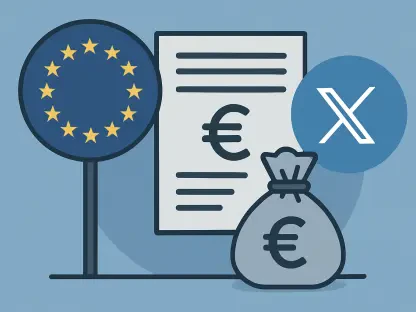Fraudulent text message scams designed to deceive recipients into revealing personal and financial information are becoming increasingly advanced. These scams typically begin with seemingly innocent messages about missed deliveries, fines, or even fake alerts from trusted organizations. They often include logos and other elements that make them appear legitimate. The FBI and cybersecurity experts have identified this as part of an extensive fraud campaign that has generated thousands of counterfeit websites in recent years. This increasing prevalence emphasizes the need for individuals to stay vigilant and aware of these deceptive practices.
Sophistication of Modern Scams
Modern text scams have evolved significantly, now featuring well-crafted messages that are difficult to distinguish from authentic communications. Unlike earlier scams, which were easily identifiable due to poor grammar and obvious errors, today’s fraudulent messages are articulate and localized, making them appear more credible. This shift has allowed scammers to target a broader audience, including both Android and iPhone users.
A notable indicator of potential scams is the presence of specific words within links, such as ‘com-track’ or ‘com-toll,’ which fraudsters use to craft URLs that seem trustworthy. These subtle alterations enable criminals to gain the confidence of their victims and steal sensitive information or install malware. Being aware of these tactics and knowing the common elements of a scam message can help individuals identify and avoid falling victim to these schemes.
The industrialization and increased organization of phishing efforts have also contributed to their effectiveness. Scammers now operate in a more systematic manner, using tools and techniques that were once reserved for large-scale operations. This level of sophistication has made it increasingly challenging for individuals to recognize fraudulent messages. Therefore, it is crucial to remain cautious and scrutinize any unexpected or unfamiliar text messages carefully.
Identifying and Avoiding Text Scams
One of the most important steps in protecting against text scams is learning how to identify potential threats. Messages that come from unfamiliar numbers, contain misspellings or grammatical errors, or include urgent language should all raise red flags. Additionally, individuals should be wary of any messages that request personal information or direct them to click on suspicious links.
Experts advise exercising caution by closely examining links before clicking on them. This means looking for unusual words or phrases within URLs and questioning the legitimacy of the sender. Trusting one’s instincts can also play a crucial role in avoiding scams. If something seems off or too good to be true, it is better to err on the side of caution and avoid engaging with the message.
In addition to scrutinizing links, individuals should also consider using security features available on their devices and within messaging apps. Features like two-factor authentication and spam filters can provide an extra layer of protection against fraudulent messages. Regularly updating devices and installing security patches can enhance defense mechanisms against scams and malware.
Vigilance in the Face of Advanced Threats
Fraudulent text message scams, designed to trick people into divulging personal and financial information, are becoming increasingly sophisticated. These scams usually take the form of innocent-looking messages about missed deliveries, fines, or even fake alerts from well-known organizations. These messages often include official-looking logos and other elements to mimic legitimacy. The FBI and cybersecurity experts have recognized this as part of a large-scale fraud campaign that has led to the creation of thousands of fake websites in recent years. These scams aim to exploit the trust that people have in familiar institutions, making it easier to deceive them. As a result, it is more important than ever for individuals to be cautious and aware of these deceptive tactics. Being vigilant and double-checking the validity of unsolicited messages can help protect personal and financial information from falling into the wrong hands. This growing threat underscores the necessity for education and awareness about how to recognize and avoid such scams.









